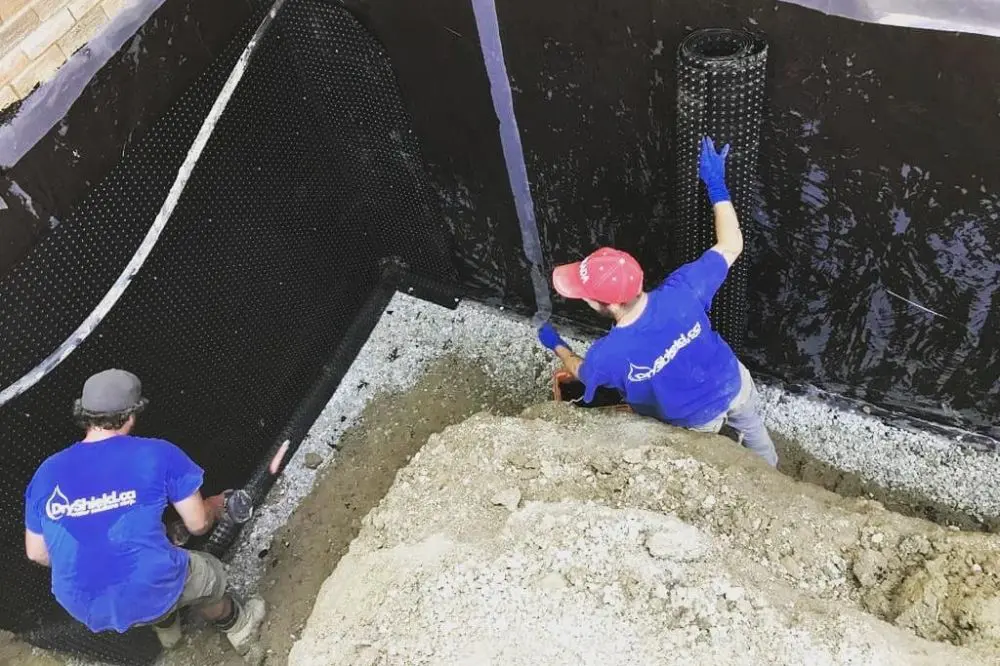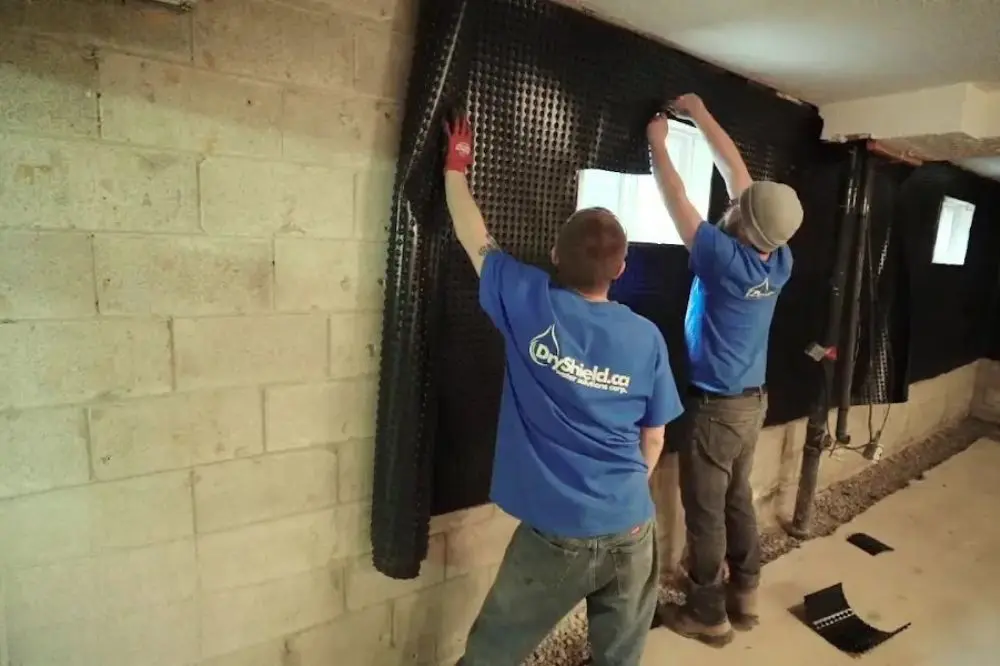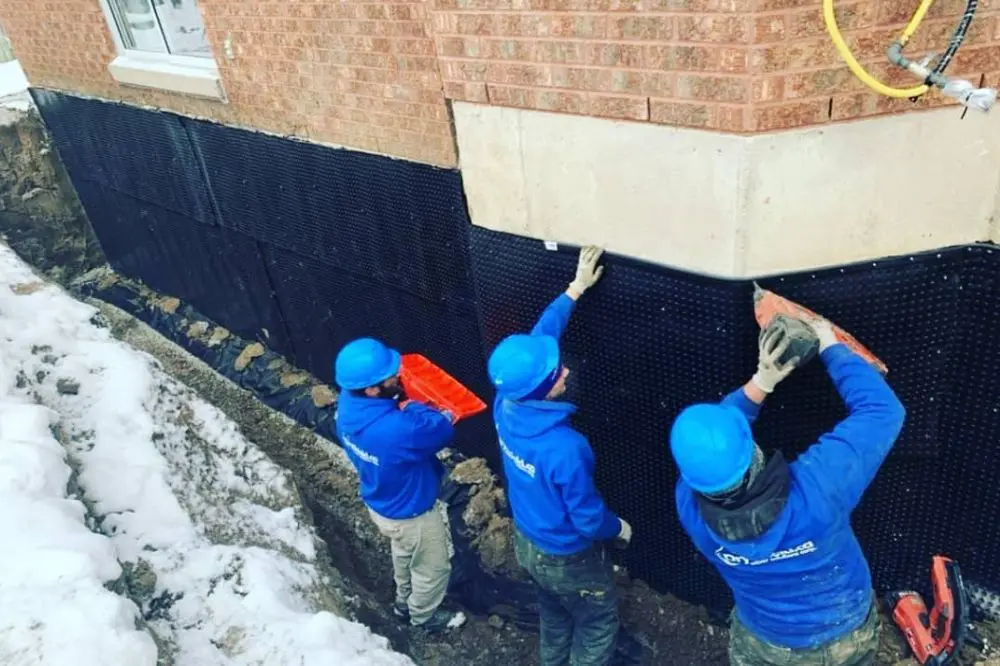Water is one of the most common causes of damage in homes, especially in areas like Toronto that get a lot of rain and snow. You might not see it at first, but when water finds its way into your home—through the basement, the walls, or tiny cracks in the foundation—it can create serious issues. Over time, this can lead to mould, wood rot, peeling paint, and worst of all, structural damage.
A lot of homeowners wait until they notice leaks or damp patches before doing anything. By that time, the damage might already be done. That’s where waterproofing comes in. It’s one of the best ways to keep your home strong and safe. It helps prevent water from entering in the first place, which can save you money and stress later on.

If you’re a homeowner looking to avoid long-term damage, waterproofing services are a smart investment. Below, we break down how waterproofing protects your home from the inside out.
Table of Contents
How Waterproofing Protects Your Home from Structural Damage
How Waterproofing Protects Your Home from Structural Damage
How Waterproofing Protects Your Home from Structural Damage
1. Stops Water from Entering the Foundation
The foundation is what your whole home sits on. If it’s not kept dry, water can seep in from the soil and slowly weaken the structure. Over time, the pressure from wet soil and freezing temperatures can cause cracks. These cracks let in even more water, which only makes things worse.
Waterproofing stops this cycle before it starts. Whether it’s with exterior sealants, drainage systems, or internal waterproof membranes, the goal is to keep moisture away from the foundation.
2. Seals Small Cracks Before They Become Big Problems
Small cracks in concrete or brick might not look like a big deal. But water can get in, freeze during cold weather, and make the crack grow. The more it expands, the more the structure weakens.
Waterproofing fills these cracks with special materials that block water from entering. This simple step can prevent larger problems and more expensive repairs in the future.
3. Keeps the Basement Dry
Basements are often the first place water enters. It might come through windows, floor joints, or small wall gaps. Once inside, the water can cause stains, musty smells, and damage to your floors or stored items.
Waterproofing adds a protective layer on the inside or outside of your basement walls. It might also include a drainage system that sends water away from the home. Either way, the goal is to keep your basement dry and safe for everyday use.
4. Prevents Mold and Mildew Growth
Mould loves damp places. It can grow in basements, behind walls, or under floors. Not only does mould damage the materials in your home, but it can also affect your health—especially if someone has allergies or breathing problems.
Waterproofing prevents the damp conditions that mould needs to grow. When the space stays dry, mould can’t survive. This protects your home and everyone living in it.
5. Reduces Soil Erosion Around the Foundation
When water collects around the outside of your home, it can wash away the soil. This is called erosion. Over time, erosion can affect how your house sits on its foundation. If the soil moves, the foundation might shift or sink.
Good waterproofing plans include ways to direct water away from the house—like sloping the ground, adding gutters, or installing drainage pipes. This helps keep the soil strong and stable.
6. Protects Load-Bearing Structures
The materials that hold your house up—like wood beams or steel supports—can wear down if they stay wet. Wood can rot, and steel can rust. This puts the strength of your home at risk.
By keeping these areas dry, waterproofing protects the parts of your house that carry weight. That means fewer repairs and a safer home overall.
7. Extends the Life of the Home
Have you ever seen peeling paint or bubbling wallpaper? That’s often a sign of water behind the walls. While it might seem like just a cosmetic issue, it could mean there’s serious moisture hiding in the structure.
Waterproofing tackles the root of the problem—stopping water from entering in the first place. It’s much better than covering up the damage with paint or repairs that won’t last.
8. Prevents Cosmetic Damage That Leads to Bigger Problems
A home that stays dry will last longer. Cracks, mould, rot, and sinking foundations can all shorten the life of a home. Waterproofing helps avoid those problems and keeps the structure strong for many years.
This is especially helpful if you ever want to sell your home. Buyers like knowing a house is dry and strong. That’s why protecting foundations is not just about safety—it’s also about protecting your investment.
9. Supports Resale Value and Home Safety
In Toronto, the weather can change quickly. There’s snow in winter, heavy rain in spring, and the ground can stay damp for weeks. These conditions make homes more likely to get water damage.
Waterproofing prepares your home to handle all kinds of weather. It gives you peace of mind, knowing that rain and snow won’t slowly wear away at your home’s structure.
Wrap Up!
Water might seem small, but over time, it can do a lot of harm. From cracked foundations to mouldy basements, the damage builds slowly and can be costly to fix. That’s why waterproofing is so important. It keeps water out, keeps your structure strong, and gives you fewer things to worry about.
Whether you’ve seen signs of moisture or you just want to prevent future problems, waterproofing is a smart move for any homeowner in Toronto.Dryshield Waterproofing Toronto offers expert solutions that match the local climate and building styles. Their team understands what Toronto homes need to stay dry, strong, and safe. Waterproofing isn’t just a repair—it’s a long-term solution for your home’s future.



